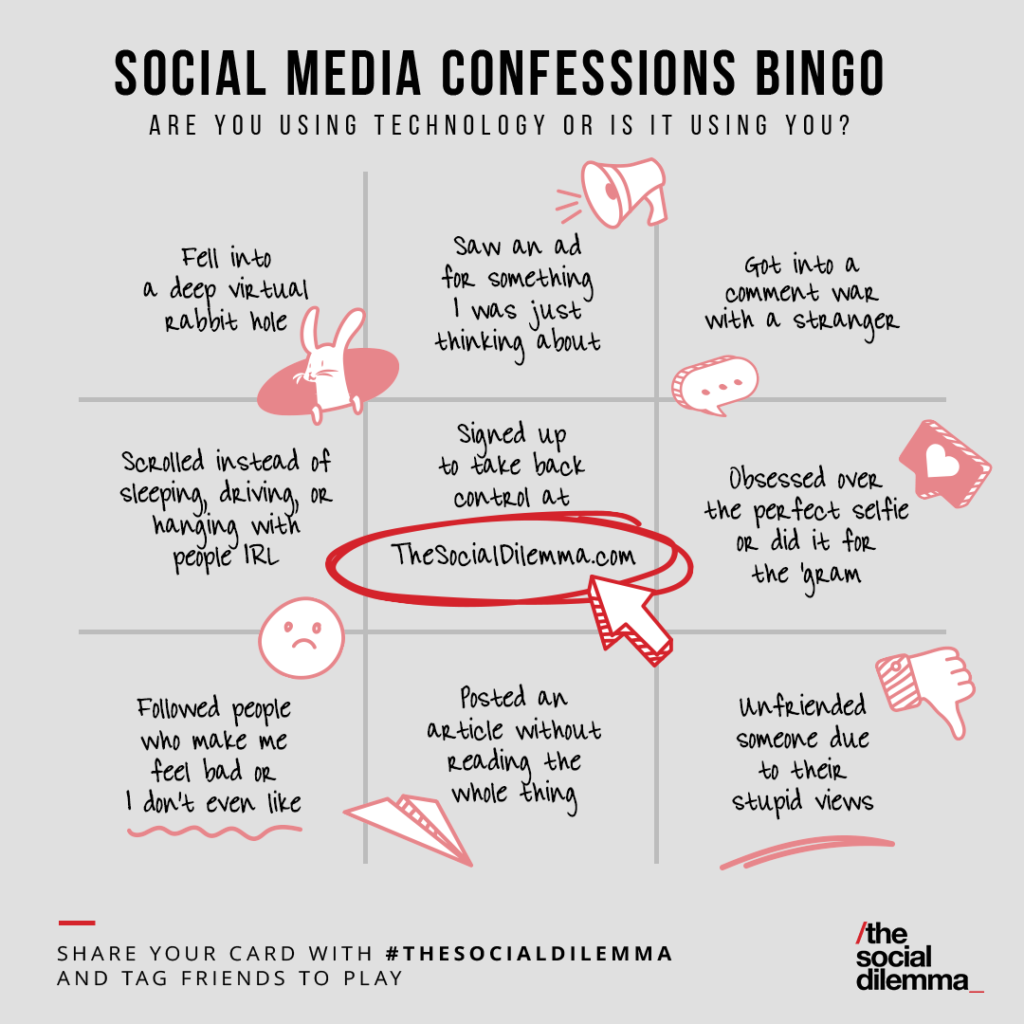Warning! Major spoilers ahead.
Netfilx’s new documentary film, The Social Dilemma, exposes concerns surrounding heavy use of social media and narrows in on the following facts (The Social Dilemma, n.d.):
- User designs and experiences of social media sites are addicting and are related to declines in overall health, both mental and physical, and satisfaction.
- Social media sites allow for the spread of misinformation via advertising.
- Social media sites promote and spread hateful and divisive content.

From a MCM grad student’s perspective, naturally, one must consider communication theory.
The uses and gratification theory (UGT) explains how needs are met across media channels leading to a sense of gratification (Whiting & Williams, 2013). With social media, once gratification has been received, users will repeat seeking gratification on an on-going basis through the same channel where the gratification was found (Whiting & Williams, 2013). Whiting and Williams’s (2013) study revealed respondents primarily used social media for social interaction (88%) and to find information (80%).
The film reveals that social media tech companies seem knowledgeable of this theory and exploit it by designing features to make users feel gratified (Rhoads & Orlowski, 2020). With the sense of gratification, users find it challenging to disconnect from social media and even become addicted to social media (Rhoads & Orlowski, 2020). Additionally, these social media sites’ algorithm are programmed to serve content to users based on their favorable interactions towards specific topics and have, allegedly, unintentionally pigeonholed users into at times radical and divisive content (Rhoads & Orlowski, 2020).
From a marketing communications professional’s perspective, what’s next?
Despite the many opportunities in using social media sites for marketing communication professionals, the next best thing to do is anticipate the changes to come (Gavet, 2020).
- Advertising with deduced targeting capabilities and increased privacy protections for consumers.
- Advertising to consumers who are more distrustful of brands and expect greater corporate social responsibility.
From a consumer’s perspective, what can we do?
The filmmakers encourage viewers to continue the conversation, use tools to find balance and protect privacy, and demand for ethics in technology (The Social Dilemma, n.d.).
Let’s get started and play bingo!

References
Gavet, M. (2020, September 1). What’s next for Silicon Valley? Retrieved from https://hbr.org/2020/09/whats-next-for-silicon-valley
Rhoads, L. (Producer), & Orlowski, J. (Director). (2020, September). The social dilemma [Motion picture]. United States: Netflix.
The Social Dilemma. (n.d.). The dilemma. Retrieved from https://www.thesocialdilemma.com/the-dilemma/
Whiting, A., & Williams, D. (2013). Why people use social media: A uses and gratifications approach. Qualitative Market Research, 16(4), 362-369. doi:http://dx.doi.org.libproxy1.usc.edu/10.1108/QMR-06-2013-0041

6 Responses to What’s up with The Social Dilemma?